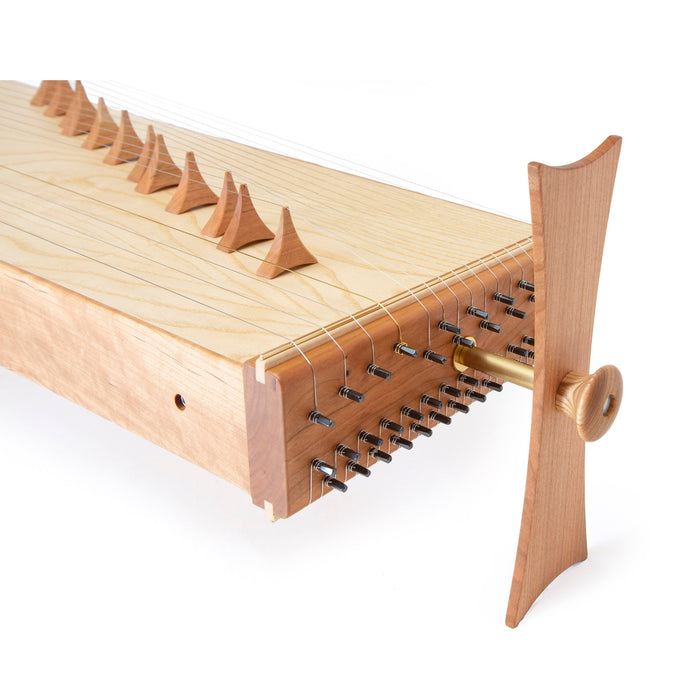
KoTaMo Concert Monochord - Tanpura, Koto and Monochord
ONLY 2 LEFT at the REDUCED PRICE
The KoTaMo Concert Monochord is a three in one instrument that combines a monochord with a koto and a tanpura. The monochord is on one side and the tanpura and koto share the other.
Strings and Tuning:
-
The monochrome Monochord with 28 overtone strings(C) and 2 bass strings(c)
- The earthy tambura with 4 strings in C,c, c, G, which produces gentle and long-lasting, Indian-like whirring tones)
-
The melodious Koto with 12 Kotos strings, which are individually underlaid with single bridges
Dimensions: 53 x 12 x 4 inches (approx)
Materials: Cherry wood and ash, handmade in germany
Includes: Tuner, tuning instrument, some replacement strings, and wood stand.
Strum on the strings close to the bridge of the monochord to create sounds rich in over-tones. Strum in the middle and the sound is more even. At first, it seems like you’re hearing only one tone, but as your mind relaxes you can notice a full variety of tones and overtones that weave a wistful and subtle melody. It creates a sound experience much like that of a gong.
Videos and Instruction Manual
Instruction Manual: view
The exotic challenge for all guitarists, harpists and string virtuosos - the versatile
The koto with the single bridges dominates with its harp-like sound, which is occasionally complemented by draw notes. The Monochord accompanies with its fine waves, the tambura completes the sound with its exotic unmistakably Indian whirring tones. The MO-46GK is played lying down. For storage it can be placed upright. In this position the instrument is also very space-saving and a beauty in the living room.
The single bridges can be plucked individually, or played over like a harp. Like a Koto, the single bridges can also be pressed down on the non-tuned side after plucking, so that the tone increases its frequency or produces a vibrato. The tuning template provides a diatonic scale over 1.5 octaves, but the single bridges can also be moved at will, even during play, and a variety of other tunings can be tuned. The single bridges are arranged in the same way as traditional kotos are played, to allow the technique of pulling notes. Here the highest to n is on the player's side. In Europe the upside down construction is mostly used by instrument makers, because it serves the playing technique of the guitar players and no rethinking is necessary. We base our construction on the traditional playing technique of the Guzheng.
How to insert the template:























